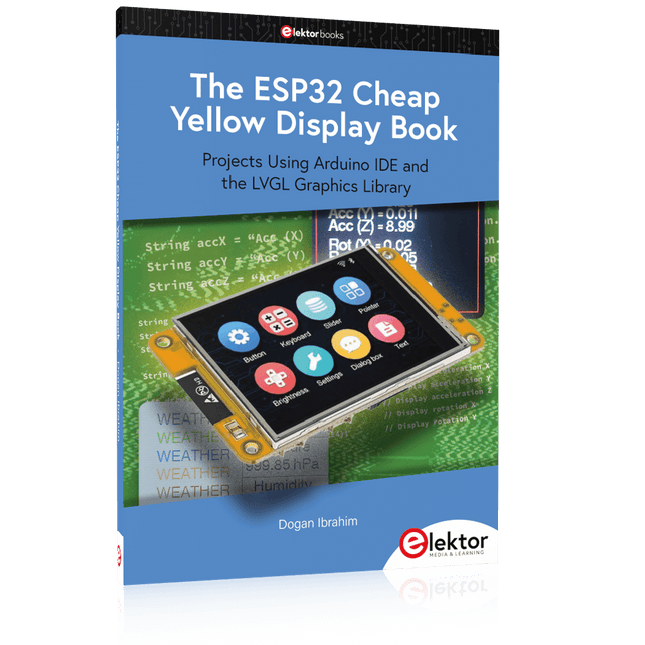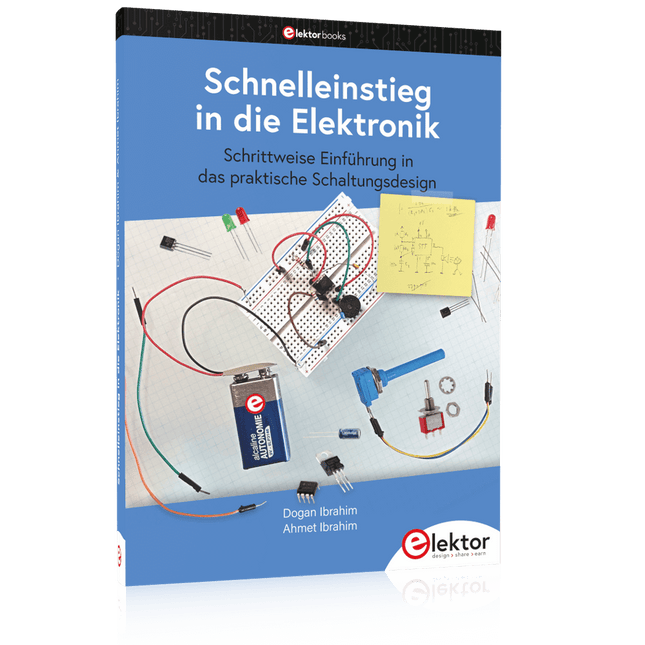Bücher
-

Make Getting Started with 3D Carving
Learn the basics of designing and making things with Inventables' software (Easel) and 3D carving machines (X-Carve and Carvey) This book was written for people who have never carved before. It teaches the basics of designing and making things with Inventables' software (Easel) and 3D carving machines (X-Carve and Carvey). It showcases five step-by-step projects you can build yourself as a beginner, including an inspiration tile, kitchen cutting board, custom block stamp, fidget spinner, and balsa wood glider. The book also features a gallery of aspirational projects, like an electric guitar and a box joint toolbox, to show what else is possible through 3D carving. The design files and instructions for these more complex projects can be found on the Inventables website. Projects Included Participate in the world's largest mosaic tile wall Build a glider to your own specifications Create your own inlay cutting boards Carve a fidget spinner toy Craft wooden 3D stamps you can use to create your own greeting cards
€ 22,95
Mitglieder € 20,66
-

Raspberry Pi Foundation The Official Raspberry Pi Camera Guide (2nd Edition)
Add the power of HDR photography, Full HD video, and AI image recognition to your Raspberry Pi projects with Camera Modules. Give intelligence and depth to your creations, making your projects smarter and more responsive. Plus, the new AI Kit supercharges your Raspberry Pi Camera Module with image recognition, enabling it to act and react to the world around it. This book is your step-by-step guide to adding a Camera Module to your Raspberry Pi board. You’ll master still images, capture video clips as digital files, and control the camera with shell commands and Python code. Discover the numerous modes and effects available, and use the camera in a variety of exciting projects across 18 packed chapters: Capturing photos and videos. Control the camera with precision. Add artificial intelligence with the AI Kit. Time-lapse photography Build a bird box camera. …and much more!
-

Würth Altium Designer Praxis-Handbuch (Teil 1: Grundlagen)
Das Buch bietet eine Einführung in die erfolgreiche Leiterplattenentwicklung mit dem Altium Designer. Neben dem notwendigen Grundwissen werden auch weiterführende Themen wie Bestückungsvarianten, Versionsverwaltung und Multi-Channel-Design behandelt. Um den Einstieg zu erleichtern, werden die meisten Themen als Schritt-für-Schritt-Anleitungen mit zahlreichen Abbildungen vermittelt. Praxistipps des Autors helfen dem Einsteiger dabei, typische Probleme sicher zu vermeiden. Das Buch behandelt folgende Themen: Von der Installation zum ersten Projekt Einführung in die Altium Designer Entwicklungsumgebung Vom Projekt zum fertigen Schaltplan Leiterplattenentwicklung Produktionsdaten erzeugen Einführung in die Altium Designer Bibliothekskonzepte Bestückungsvarianten Versionsverwaltung Parameter Management Multi Channel Design Skripte installieren und ausführen Leiterplatte dokumentieren mit dem Draftsman Einführung Altium 365 Liste der Tastenkürzel Downloads Leseprobe
€ 49,00€ 29,00
Mitglieder identisch
-

Elektor Publishing The ESP32 Cheap Yellow Display Book
Projects Using Arduino IDE and the LVGL Graphics Library The ESP32 is probably one of the most popular microcontrollers used by many people, including students, hobbyists, and professional engineers. Its low cost, coupled with rich features makes it a popular device to use in many projects. Recently, a board called the ESP32 Cheap Yellow Display (CYD for short) is available from its manufacturers. The board includes a standard ESP32 microcontroller together with a 320x240 pixel TFT display. Additionally, the board provides several connectors for interfaces such as GPIO, serial port (TX/RX), power and Ground. The inclusion of a TFT display is a real advantage as it enables users to design complex graphics-based projects without resorting to an external LCD or graphics displays. The book describes the basic hardware of the ESP32 CYD board and provides details of its on-board connectors. Many basic, simple, and intermediate-level projects are given in the book based on the ESP32 CYD, using the highly popular Arduino IDE 2.0 integrated development environment. The use of both the basic graphics functions and the use of the popular LVGL graphics library are discussed in the book and projects are given that use both types of approaches. All the projects given in the book have been tested and are working. The block diagram, circuit diagram, and the complete program listings and program descriptions of all the projects are given with explanations. Readers can use the LVGL graphics library to design highly popular eye-catching full-color graphics projects using widgets such as buttons, labels, calendars, keypads, keyboards, message boxes, spinboxes, sliders, charts, tables, menus, bars, switches, drop-down lists, animations, and many more widgets.
-

Elektor Publishing Schnelleinstieg in die Elektronik
Schrittweise Einführung in das praktische Schaltungsdesign Der Einstieg in die Elektronik ist nicht so schwierig, wie man vielleicht denkt. Mit diesem Buch werden die wichtigsten Konzepte der Elektrotechnik und Elektronik auf spielerische Weise erkundet, indem verschiedene Experimente durchgeführt und Schaltungen simuliert werden. Es vermittelt Elektronik praxisnah, ohne in komplexen Fachjargon oder lange Berechnungen einzutauchen. Dadurch werden schon bald eigene Projekte ermöglicht. Es sind keine Vorkenntnisse in Elektronik erforderlich; lediglich einige grundlegende Algebra-Kenntnisse werden in wenigen einfachen Berechnungen verwendet. Viele getestete und funktionierende Projekte und Simulationen werden vorgestellt, um mit dem Aufbau elektronischer Schaltungen vertraut zu werden. Für problemloses Experimentieren – ohne die Gefahr, etwas zu beschädigen – werden zudem frühzeitig auch softwarebasierte Schaltungssimulationen vorgestellt. Lernziele: Konzepte von Spannung, Strom und Leistung Wechselstrom (AC) und Gleichstrom (DC) Grundlegende Lampenschaltungen mit Schaltern Passive Bauteile: Widerstände, Kondensatoren und Induktivitäten RC- und RCL-Schaltungen und Elektromagnetismus Lautsprecher, Relais, Summer und Transformatoren Aktive Bauteile: Dioden und LEDs, Bipolartransistoren und MOSFETs Transistorbasierte Schaltungen Optokoppler-Schaltungen Astabile und monostabile Multivibratoren Verwendung des 555-Timer-ICs Operationsverstärkertechnik Digitale Logik Beispiele: Verstärker, Oszillatoren, Filter und Sensoren Test- und Messwerkzeuge Mikrocontroller: Arduino Uno, ESP32, Raspberry Pi Pico und Raspberry Pi Datenblätter lesen und Auswahl von Komponenten EMV & EMI sowie Normen & Vorschriften
€ 44,80
Mitglieder identisch




